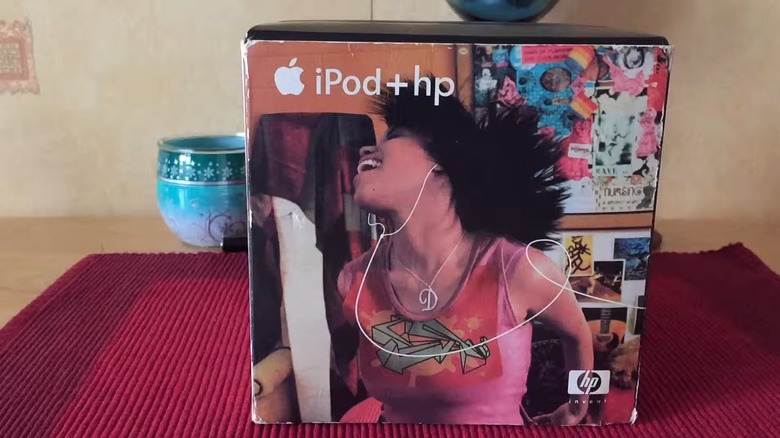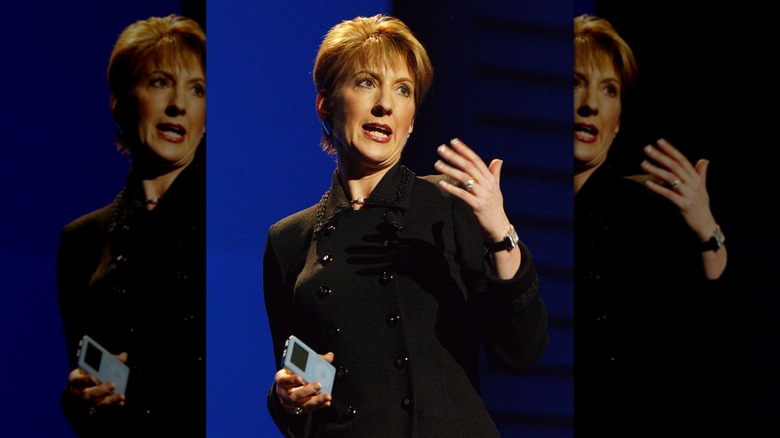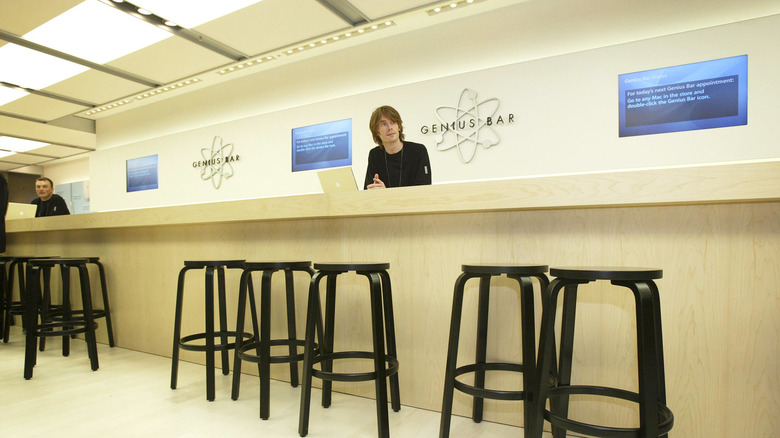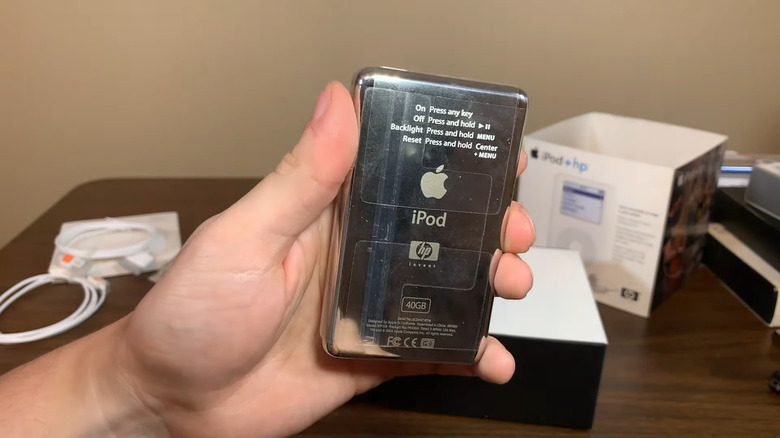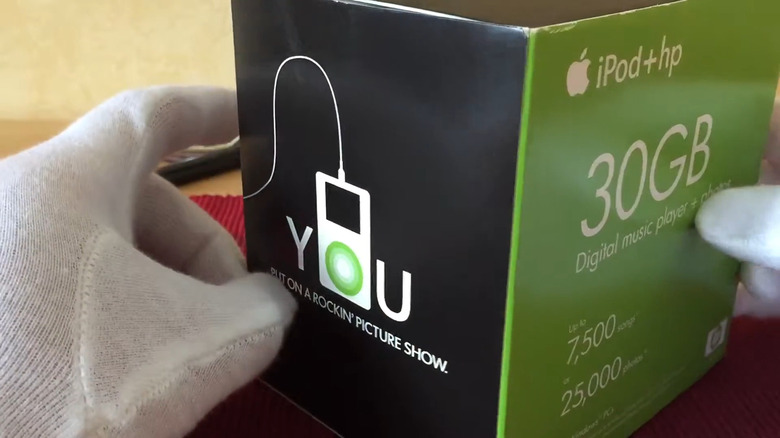The Apple + HP iPod Partnership Everyone Forgot About
When Apple released the original iPod in 2001, it was a game changer. Portable music players capable of playing MP3 files had been on the market for a few years, but all were constrained by the meager limitations of affordable solid-state flash storage at the time. Apple created a far superior value proposition by leveraging new 1.8-inch hard drives from Toshiba, letting the iPod launch at a competitive price with 5 gigabytes of storage when most of its competitors were topping out at 128 megabytes.
In time, as Toshiba's 1.8-inch hard drives improved and Apple's iPods evolved, that capacity ballooned to 160GB before the original iPod, eventually renamed the iPod Classic, was discontinued in 2014 due to difficulty finding parts as well as the device's dwindling market share.
The old-school iPod became iconic, and during its lifespan, there were various special edition versions of both the iPod Classic and the other products in the line. Some, like the U2-themed iPod released across a few generations of the iPod, are pretty memorable, while others, like a very limited "Family Guy"-themed edition, are pretty obscure. Among the more obscure variations is a genuine curiosity: The iPod+HP, which was basically just an iPod that also carried HP branding and stands out because Apple doesn't normally partner up like that. Let's take a look at how and why the iPod+HP came into existence, how it was received, and how long it lasted.
How did the iPod+HP come into existence?
The iPod+HP was announced in January 2004. At that point, at least according to ZDNet, the idea was that it wouldn't carry the iPod branding, but would otherwise be identical to the Apple-branded original, even displaying the Apple logo onscreen when it booted up. "The way we look at it, HP will be reselling an iPod device," Phil Schiller, Apple senior vice president, told ZDNet. As part of the deal, HP also agreed to preinstall iTunes on its consumer Windows PC line.
"We explored a range of alternatives to deliver a great digital music experience and concluded [that] Apple's iPod music player and iTunes music service were the best by far," added HP CEO Carly Fiorina in a statement. "By partnering with Apple, we have the opportunity to add value by integrating the world's best digital-music offering into HP's larger digital-entertainment system strategy."
That same day, Fiorina revealed the new HP iPod during a keynote speech at the annual Consumer Electronics Show in Las Vegas. There, Fiorina said Apple approached HP to make the deal, but otherwise filled the backstory with buzzwords that didn't convey substantive information about how they ended up working together. A source described as "an Apple leader" later told Wired, "This was a highly strategic move to block HP/Compaq from installing Windows Media Store on their PCs." HP, meanwhile, would benefit from having iPods in a stronger network of retailers than Apple had.
What, if anything, differentiated the iPod+HP from a vanilla iPod?
Though Carly Fiorina's CES keynote featured an HP-exclusive light-blue iPod, that color variant never made it to retail. By the time the iPod+HP (sometimes called "iPod by HP") hit stores in October 2004, the actual device was identical to its pure Apple-branded counterpart aside from HP's logo being added. In the physical package, the other differences were similarly superficial, coming down to different on-box branding and the included manual being Windows-centric, though the iPod+HP supported macOS.
At retail, there was also one clear advantage that the HP model had, which was that it didn't seem like it was subject to the kind of strict price controls Apple exercised on its regular iPods, with discounts of $30 to $50 off retail appearing frequently while the Apple original rarely saw discounts of more than a few dollars.
To the average customer, the added HP logo, greater focus on Windows users, and easier brick-and-mortar retail availability were the only real differences between the iPods. However, there was also another, more granular differentiator: How warranty support was handled. Both versions had a one-year warranty, but while HP's included full phone support and coverage for defects for the duration, Apple's only included 90 days of phone support while also requiring a $30 shipping and handling fee for all repairs during the warranty's second half. HP's iPod also couldn't be serviced at Apple Stores, just HP service centers.
What was the reception of the iPod+HP like?
Of the professional reviews of the iPod+HP published immediately after its release, only one can easily be found in 2024, from iLounge. That review noted that, since the site had already reviewed the fourth-generation iPod, what would be covered within would mainly be the differences between the HP and Apple models. Since the products were functionally identical, that makes perfect sense: Any reviews of that generatoin of iPod hardware, user interface, and iTunes integration would cover the iPod+HP. Years later, though, in a May 2022 ranking of iPods from over two decades, PC Mag would deem the iPod+HP the 32nd and last: the worst iPod Apple ever made.
"The worst iPod in history, in my view, happened when HP skinned over iPods and tried to sell them as its own products," wrote the magazine's lead mobile analyst, Sascha Segan. "Although the fourth-gen iPod was a decent iPod, buying the HP model put you out of Apple's support system and forced you to try to get support for an Apple product from HP, which wasn't a great idea."
The public, meanwhile, didn't embrace the iPod+HP at all. Per date Apple provided to CNN, just 7% of iPods shipped during 2004's Christmas shopping season were HP-branded. In February 2005, Carly Fiorina, the architect of the deal for HP, resigned from her post atop the company, though the iPod+HP wasn't the only reason.
How did the iPod+HP end its run?
Come July 2005, HP announced that it would be ending sale of iPod+HP, telling The Register in a statement that the deal somehow "met or exceeded our internal expectations" while adding, in a seeming contradiction, that "the iPod doesn't fit in with our digital entertainment strategy." Not only was the product poorly and confusingly marketed, but the release of each iPod+HP version lagged behind that of its regular Apple counterpart, so without the planned HP-exclusive colors or other differentiators, customers had no reason to buy an HP-branded iPod.
Apple spokeswoman Natalie Kerris declined to comment to the Associated Press about how the end of the deal would affect Apple's financial performance, though the article noted that of the 6.2 million iPods shipped in the most recent quarter, just 500,000 — a bit over 8% — were iPod+HPs.
"HP is constantly evaluating how we can make the most of our digital entertainment experience for consumers," added HP spokesperson Ross Camp. He refused to answer questions about HP making its own portable music player, something HP was contractually barred from doing through August 2006. The last remnants of the Apple/HP deal were stripped away at CES 2006, when HP announced that Rhapsody would replace iTunes as the preinstalled music software on its Windows computers.
